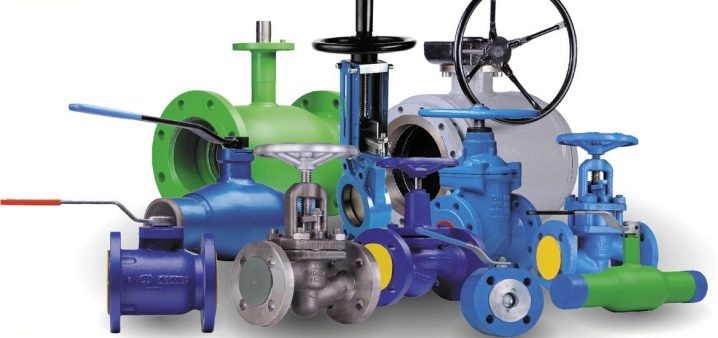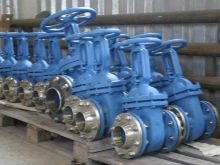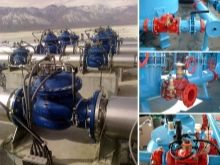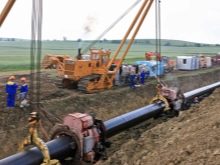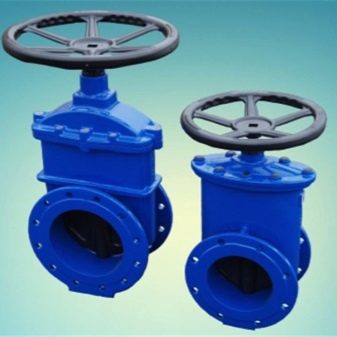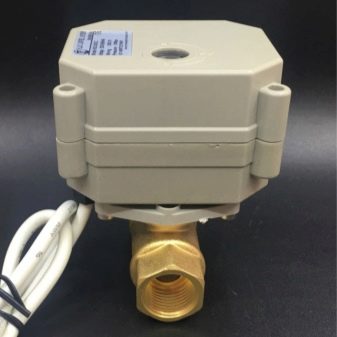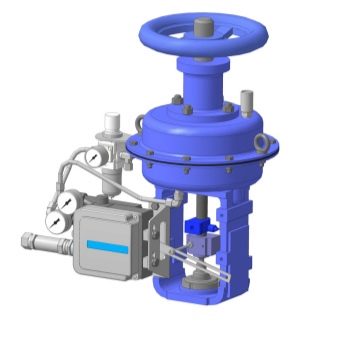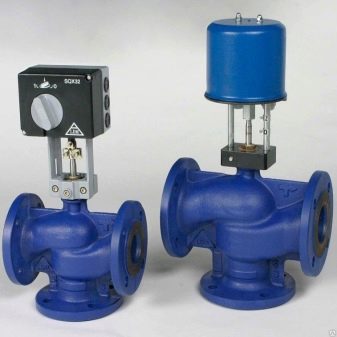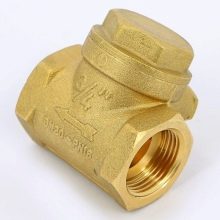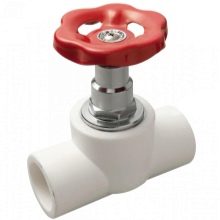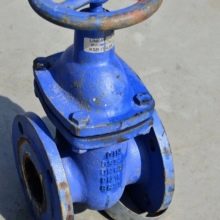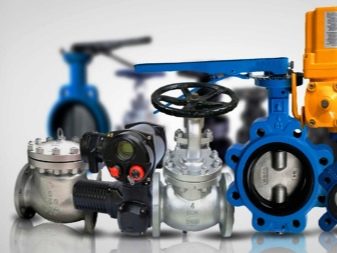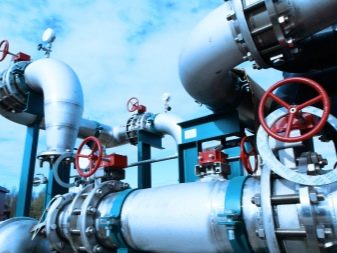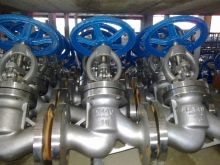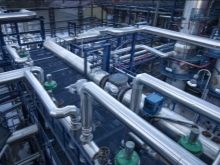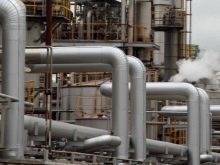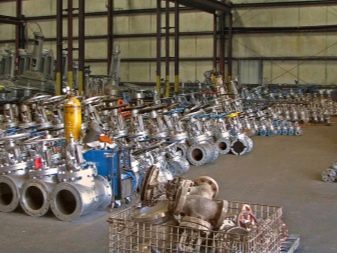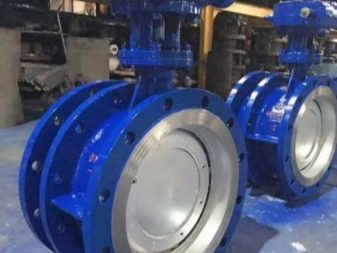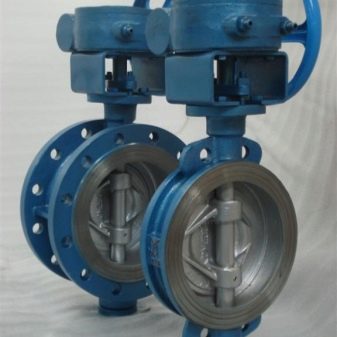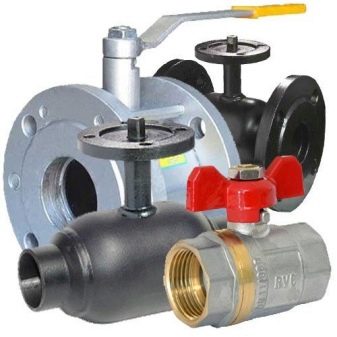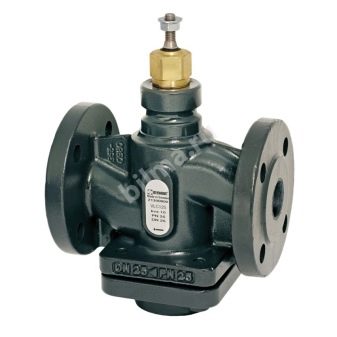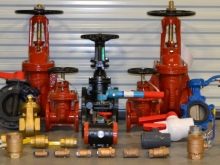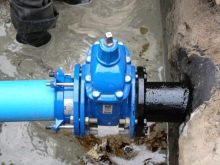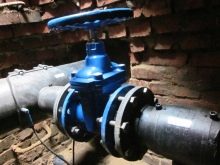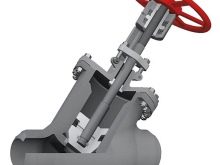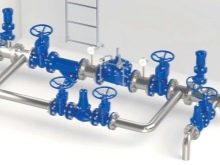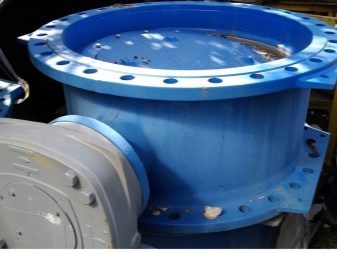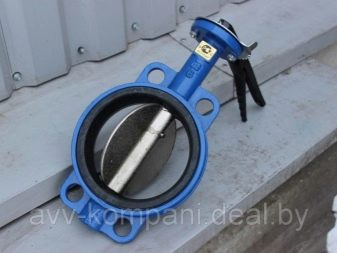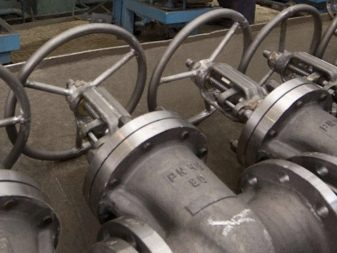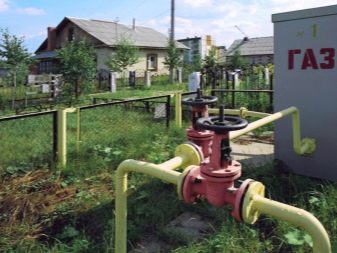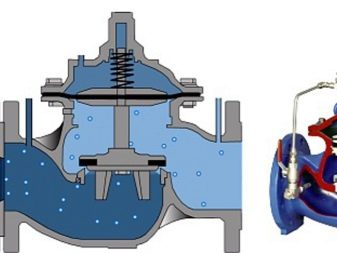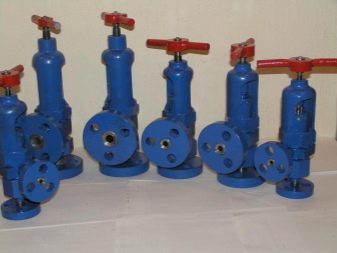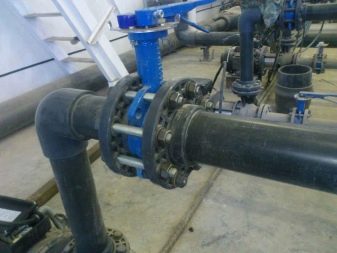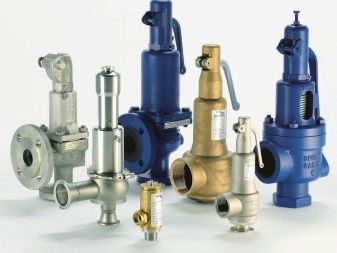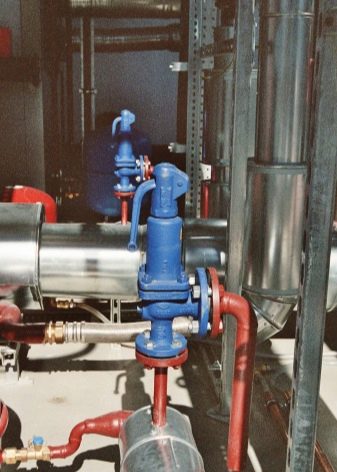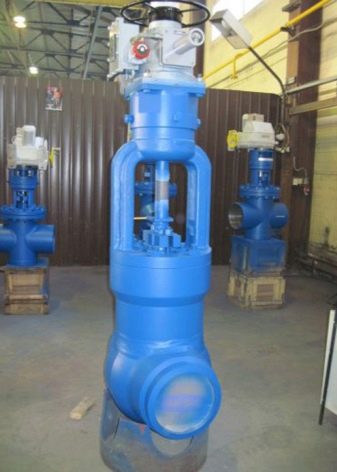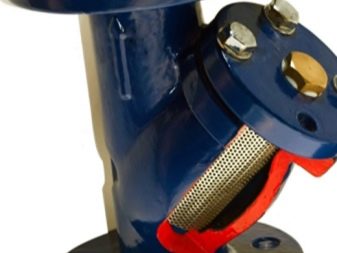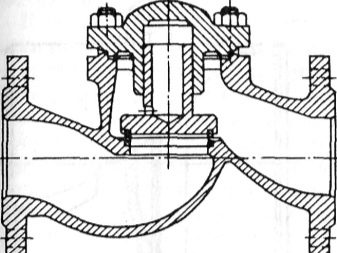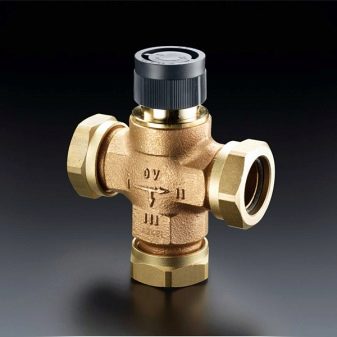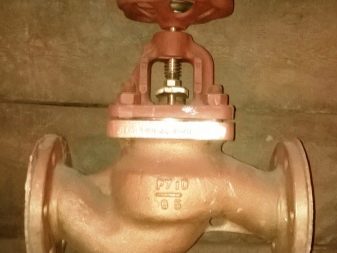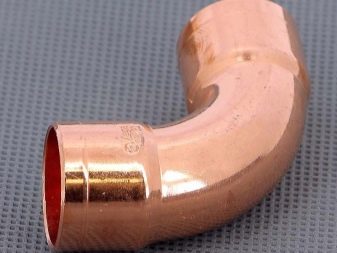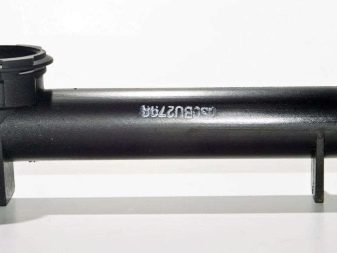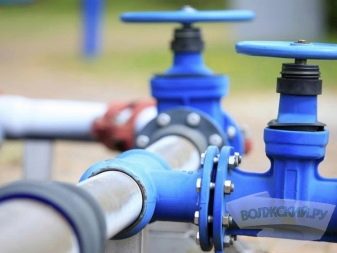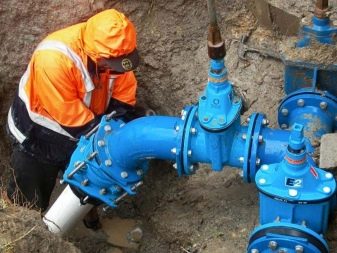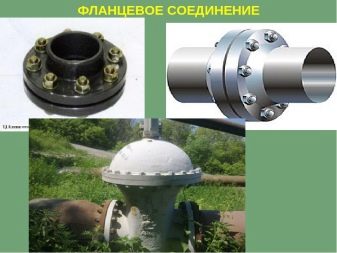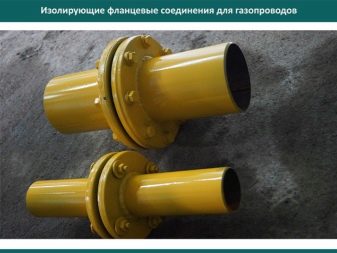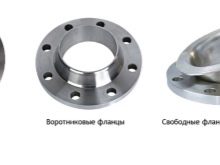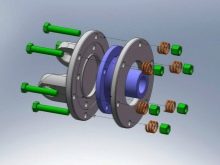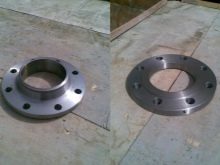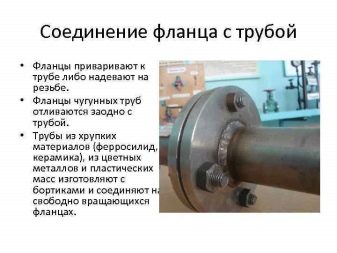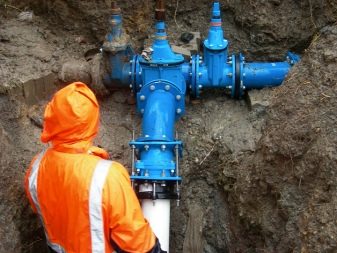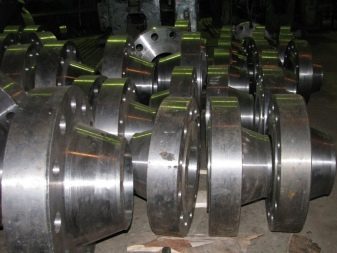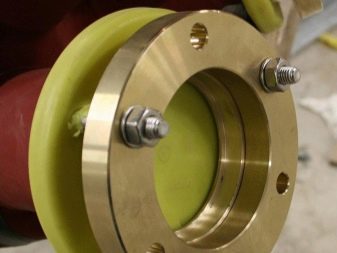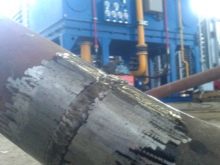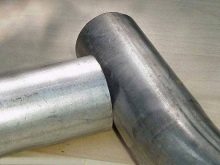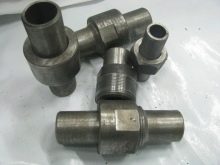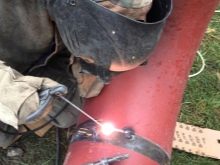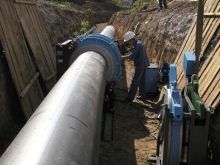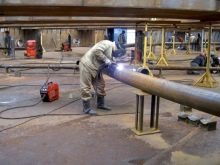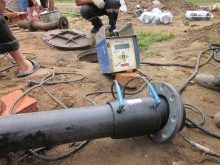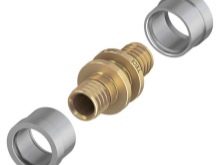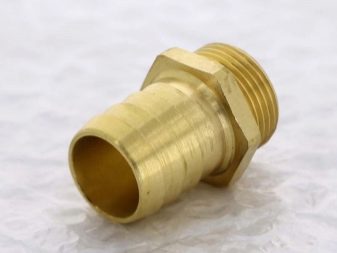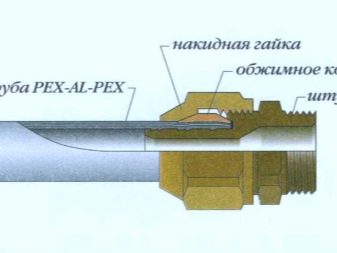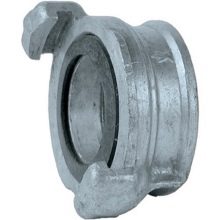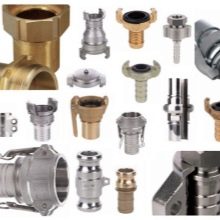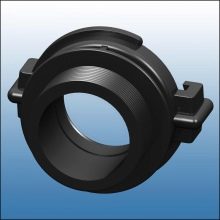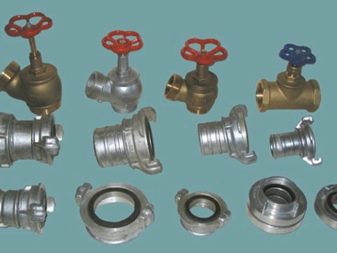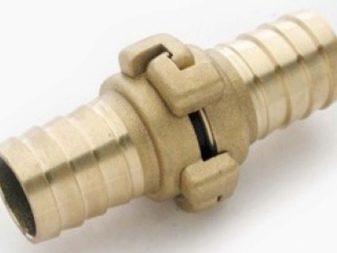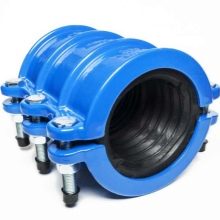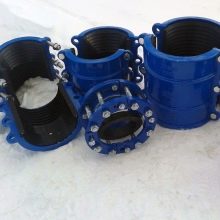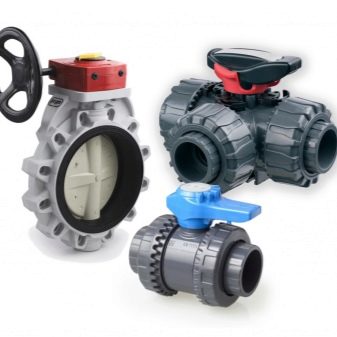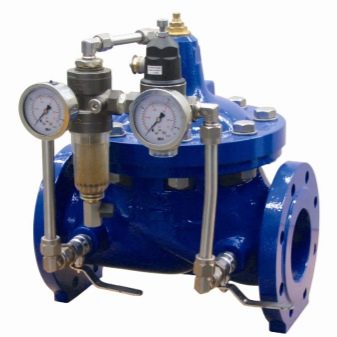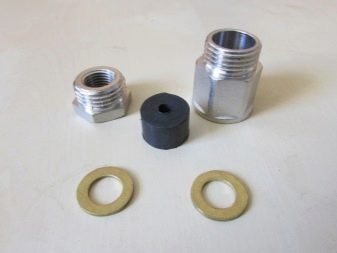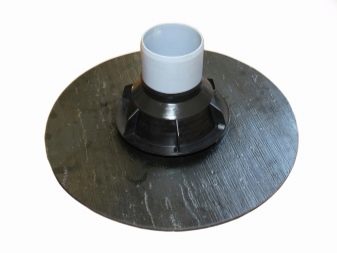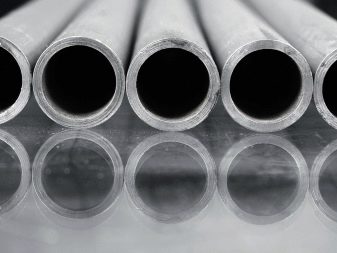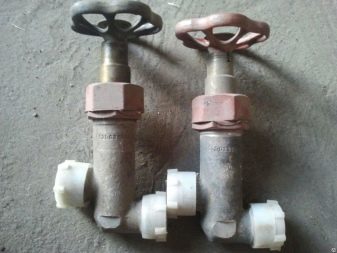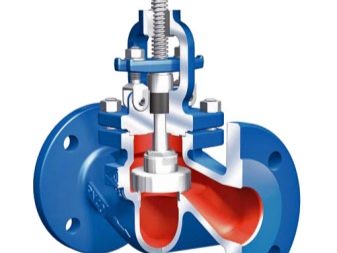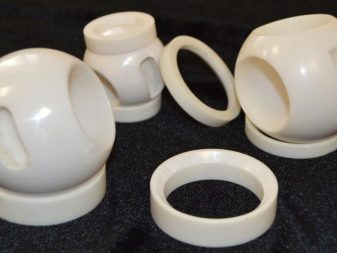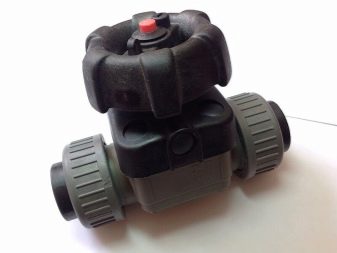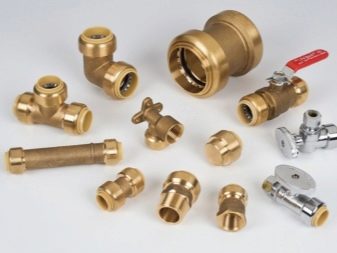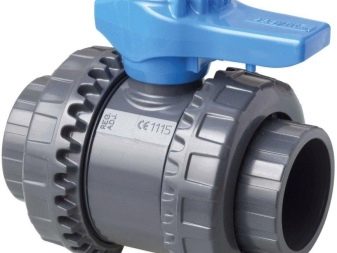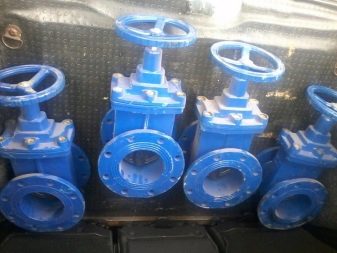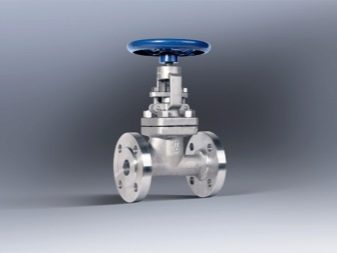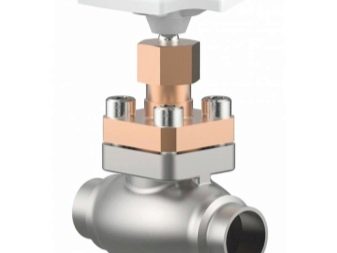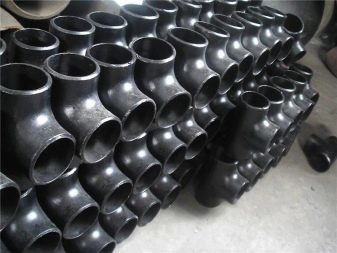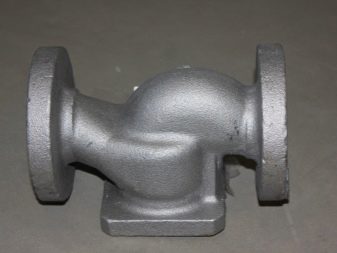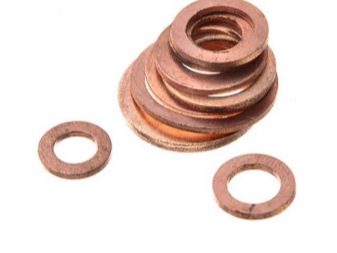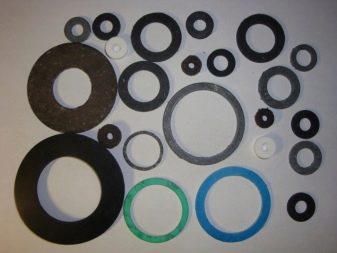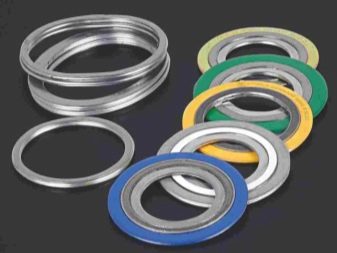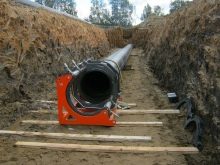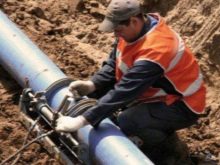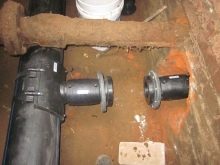Pipe fittings: what it is, classification and use
Any pipeline network is a rather complex, but indispensable design, in which each element is designed to perform a specific function. But it is important to know that the trunk line is not only made of pipes, it also requires such a component as fittings. Today we will examine in detail what these details are, and also learn how to apply them correctly.
Definition and purpose
Before considering which types of pipe fittings exist and how they are used, it is necessary to find out what such elements are.
Pipe fittings are a special device that is mounted on pipelines, tanks and equipment. These elements are required for the management of working environments by changing the area of the incoming section.
Depending on the method of regulation, valves may be equipped with actuators of the following types:
- manual (or mechanical);
- pneumatic (hydraulic);
- electric (electromagnetic);
- automatic (remote).
Pipeline fittings and pipes themselves are made from varieties of rubber, nickel, titanium or aluminum.
Nowadays, the most popular and frequently encountered are such reinforcement options as:
- gate valves;
- valves;
- shutters;
- valves;
- devices responsible for regulation.
Pipe fittings are used in many areas, which indicates its relevance.
Industrial designs of general purpose are often used in various fields that are connected with the national economy. They produce such parts in series and in large volumes. Industrial options are ideal for environments in which specific temperature and pressure parameters are often used. The specified fittings are often present in the water supply system, steam trap and gas pipeline in the boiler rooms.
Industrial components designed for use in non-standard conditions, suitable for use at high pressure parameters, as well as low or high temperatures.Such elements are permissible to apply even if we are talking about toxic, bulk materials and even environments with high radiation.
As for specialized fittings, it is usually made to order and has special technical characteristics. Often these elements are created for installations in various industrial experiments.
Ship fittings are indispensable if we are talking about specific conditions of use. For example, it may be ships. The demand for such varieties is due to their modest weight, resistance to vibrations, as well as high reliability.
Plumbing fittings of plumbing type are used for all sorts of household appliances. This may be a gas stove, kitchen sink and other similar objects.
As you can see, such designs are used in many areas. In addition, these elements perform many functions, which makes them even more versatile and practical.
Classification
Currently there are many varieties of pipe fittings. These parts have various features and performance characteristics.To work with valves, you need to know exactly what kind it belongs.
Main types
Despite the fact that there are many varieties of pipeline valves, experts identify 4 main types of these elements. All of them have their own design features, which usually manifest themselves in the direction of movement of the regulator with respect to the direction of movement of the transported substance.
The main subtypes of reinforcement, which are distinguished by experts:
- Gate valve This detail is characterized by the fact that it has a perpendicular movement of the regulator relative to the axis of movement of the liquid / gas.
- Valve. These are devices equipped with a locking / regulating composite component that is able to move parallel to the axis of movement of the substance transported in the system. Experts strongly recommend not to use the name "valve" in relation to this part, since this designation in itself has a large number of completely different interpretations.
- The locking / regulating element in the crane. This device performs rotation around its axis, at this time making translational movements.The working part of the equipment of the crane variety is different in the structure of the body of rotation and is capable of moving at different angles with respect to the direction of the axis of movement of the working medium.
- The locking / regulating component in the gate type disk. The specified element performs rotational movements around the axis that is located at a specific angle relative to the axis of the direction of flow of matter that moves in the system.
All of these subtypes of pipeline fittings can be divided into separate components. For example, wedge and parallel gate valves are distinguished by the structure of saddles and solutions. These components are equipped with either a retractable or non-sliding shield.
Based on the shape that the valves have, the valve is also divided into several separate varieties. Today there are needle and plate closures. You can also find single and double seat valves.
Reinforcement detail of the subtype of the crane on the structure of the working component can be:
- ball;
- in the form of a cylinder;
- in the form of a cone.
Different subspecies of pipe fittings have their strengths and weaknesses. Based on the specific characteristics of such elements, reinforcement is used in one or another sphere.
Valve-type constructions have the following distinctive features:
- impressive indicator of construction height (available in the form of a gap from the axis horizontally to the upper part of the spindle in the system) in the state of absolute disclosure of the device;
- small construction length (step from one outer end plane of the joint to another);
- small hydraulic resistance;
- significant force on the shutter drive;
- gradual and smooth operation;
- high wear of the surface of the saddles in the course of use in pipelines that move the liquid with a significant degree of contamination.
It should be noted that the valve is recommended to use as a stop valve.
Valve is considered to be the most common type of pipeline fittings.
Consider its distinctive parameters:
- small building height;
- considerable construction length;
- quick response;
- increased parameters of hydraulic resistance with increaseddegree of sealing.
Valves in most cases are addressed when it comes to regulating devices. Valves related to the crane subtype contain properties and features that are typical for valves and valves.
As for the shutter-discs, their main features are:
- small building height;
- modest parameter of construction length;
- weak force on the shutter drive;
- quick response;
- modest parameters of hydroresistance.
By function
Valves can perform various functions. Depending on this parameter, several types of such devices are shared.
Shut-off
This detail is always the most tightly and tightly closes the movement of a substance in the conditions of the line during closing. In addition, valves are responsible for the permeability of the specified component without any interference in the opening conditions of the mechanism. These actions are required from time to time in accordance with the requirements.
The part responsible for lowering the working medium from the vessel or entering the measuring devices is related to the shut-off structures.
Regulatory
There is also a regulatory type of reinforcement.This detail makes it possible to adjust the temperature parameters, as well as indicators of pressure, pressure, flow rate of the substance. There are reducing and throttle reinforcement structures. Such elements are responsible for regulating the pressure level by means of hydroresistance.
Safety
This type of valve “reacts” to the valve opening at a pressure level, which significantly exceeds normal values. Usually at this moment, the emission of excess conducted mass.
Protective
A detail of this type is designed to shut off equipment, a certain part of the system when there are dangerous changes in the values of the substance being conducted, or to stop the reverse flow of the working medium in order to protect pipes and equipment from accidents. These valves are mounted on the individual components of the pipeline networks.
Phase separation
These valves are necessary for dividing the conducted medium, which is located in different phases of the state.
Distributive mixing
Such a reinforcement is responsible for ensuring the distribution of flows, their mixing and changing direction. Details from this category are divided into copies that are intended for the distribution of flows and devices, designed to mix them.
Combined
Combined pipeline fittings can perform the tasks of devices of several varieties. However, it is worth considering that the name of such a part includes only those components whose functions such reinforcement can perform. For example, devices of irretrievable-locking type can be used in the role of reverse engineering, with the use of which they overlap or limit the movement of the working medium. In addition, such parts may limit the movement of the locking component itself.
By design and shape
Depending on where the connections are located, The following types of devices are distinguished:
- checkpoints (in them all elements of the connection differ in parallel axes);
- angular.
Pipe fittings of simple type through passage have several subspecies.
There are:
- Non-full bores, in which the cross-section of the passage is smaller than the cross-section of the connection pipe at the entrance to the reinforcement structure;
- full bore, in which the cross section of the entrance area is greater than or equal to the cross section of the connecting pipe at the inlet of the reinforcement part.
By way of connection with the pipeline
As you can see, pipe fittings are classified according to various criteria. But one of the most important and significant parameters by which these devices are divided is the method of connecting them to the pipeline itself.
In the conditions of separation of reinforcement by connecting to the pipeline, one should make a start from the type of connection that results in a permanent or detachable connection. In this situation, the welding fittings that form one-piece joints remain practically “lonely”. As for the remaining connections, they remain separable. The lion's share among them accounts for choke, coupling and target compounds that are threaded.
Flange connection
Connections that use a flange are relevant in many areas. The connection of the pipeline and valves in a similar way is applied everywhere and is recognized as optimal.
Few people know, but the memorable word "flange" has German roots. In Germany, this term has the same definition as in Russia, and implies a flat plate made of metal, which is on the tip of the pipe and has holes for threaded fasteners (these can be bolts, studs and nuts).As a rule, this lamellar part has a rounded structure, however, the flange design is not limited to only one disc. Often used square and triangular elements. The difference between the rounded options is that they are much easier to make, and therefore are more popular. Triangular or square flanges are more often turned on when there is a great need. The material of manufacture, those or other design features of the flanges are in direct proportion to the diameter, pressure level of the working medium and other primary factors.
Usually in the production of flanges used such raw materials as:
- gray cast iron;
- ductile iron;
- various types of steel.
Flanges made of ductile iron can be used under pressure. In addition, such details are permissible to apply, if there is a sufficiently large temperature range. As for the gray alloy options, less “aggressive” conditions are more suitable for them. The maximum resistant to such external loads are recognized cast steel specimens. Welded flanges also seamlessly withstand elevatedtemperature indices and inferior to the cast variants only in the indicator of the highest permitted pressure.
The structure of the flanges may contain such components as:
- ledges;
- chamfers;
- spikes;
- ring sampling.
The wide distribution of flange options due to a considerable number of positive qualities that are characteristic of them. The most important advantage of such structures is the possibility of multiple installation. Of course, installation in this case cannot be called simple, since a large number of bolts will be needed, which will need to be unscrewed and tightened during disassembly and joining of flanges having a large diameter (connections of this type are most often used if the pipe diameter is at least 50 mm) . However, in such a situation, the complexity of the installation work will not be insurmountable.
Flange connections are characterized by high reliability and excellent strength characteristics. Due to these qualities, such constructions are permissible to be used for picking pipelines that operate at an elevated pressure level.If you follow all the required rules, flange connections will be responsible for the perfect tightness. To this end, the joined slates must have the same size of the accession (errors are permissible, but they should be minimal). Another important condition is the tightening of the joints, thanks to which the “grip” of the bolts will remain at the right level. This parameter is especially relevant in the conditions of constant impact on fasteners of mechanical vibrations, temperature shocks, high levels of humidity. As for the tightness of flange connections, it should be borne in mind that this parameter depends on the sealing characteristics of gaskets, which are usually installed in the gap between the flanges.
We must not forget about the deformation. In addition, flange elements made from various raw materials are subject to them in varying degrees. For this reason, the material from which the flange is made plays a significant role. For example, parts made of steel are subject to deformation much more than lightweight cast-iron specimens.
As for the weak sides of the flange-type connection, they are a continuation of their advantages.For example, increased strength characteristics lead to high consumption of raw materials, as well as high labor intensity of manufacturing parts.
Welded
Welding of reinforcing elements is applied if the reliability and tightness of other connection options are deemed insufficient. Welding is very relevant when it comes to a pipeline in which toxic and toxic fillers act as the working medium. In this situation, the connection by welding will be ideal. Of course, the work performed should be of high quality and correct. In many cases, welding becomes the only acceptable way to join. It is only necessary to take into account the fact that this part of the system should not require frequent dismantling works, during which it will be necessary to completely destroy the welded surfaces.
Due to the welding that connects with each other the various components of the piping system, it turns out to achieve an optimal match between all the necessary parts - the pipes themselves and the valves. It is very important that, due to the use of welding, the joints do not become more vulnerable.
The connecting ends of the reinforcement part are prepared in advance for future welding. To do this, level and grind the surface of the welded elements, removing the desired chamfer.
Weld-type connections are made end-to-end and into the socket.
If the method was used in a socket, the weld seam is usually located on the outer surface of the pipe. Most often, this solution is resorted to in the presence of reinforcement from steel of small diameter, which is installed in a pipeline operating under high pressure, coupled with the same high temperature of the working medium.
As for butt-joint joints, a special backing ring is often used here, which makes it possible to eliminate the bevel of the elements connected to each other. Such options are very reliable and very tight, so they are often used when installing pipeline systems of high-risk industrial buildings. For example, it can be power units of nuclear power plants.
The primary advantage of welded joints (especially if we compare them with flange variants) is their modest weight.
Coupling
In the equipment, the connection coupling fittings are most commonsubtype. This option is permissible to apply regardless of the specific type of reinforcement. This part can have both small and average diameter. As for the direct work, the valve can be designed for use in different pressure levels. The body itself of these elements can be either cast iron or metal. If there is an increased pressure in the system, then it is advisable to take taps.
In the connecting pipes of the coupling fittings, the thread is located inside. This is usually a tube-type insert, which is an inch thread with a very small distance. Create it by different methods - by knurling, cutting or stamping. It is important to take into account that in the conditions of a small thread distance the level of the height of the teeth does not depend on the diameter of the pipeline. From the outside, the connecting finite elements are executed in the form of a hexagon, so that it is most convenient to use the key.
The minimum thread of the coupling type joint, coupled with the use of specialized viscous compositions, flax strands or a special compactor, ensures its maximum tightness.The connection of the specified type does not force the use of extra fasteners. However, we must not forget that turning the coupling on the thread with a seal is quite laborious. The larger the diameter of the pipeline, the more difficult it will be to conduct such work.
Nipple
The word "choke" also has German roots and means "cut", "cut". Thus, because of the presence of the trimmed trunk, the muskets were used, which were used in the army until the 19th century. In our time, this designation is used in another field. Thus, in modern technology such a definition refers to small sections of a pipe of small length that are threaded at two ends. These components are designed to connect pipes and pipe fittings to apparatus and various kinds of units.
In the connection, the connecting tip of the reinforcement part with an external thread is pulled to the pipeline using a special cap nut. As a rule, this type of connection is addressed when it comes to fittings of small and ultra-small diameter. Most often in this case we are talking about laboratory or specialized elements. For example, it can be gearboxes mounted on cylinders with compressed gas.
With the help of the choke variant of the connection, various types of monitoring and measuring devices are installed in the pipeline network, evaporators and many other types of equipment are installed, which are integral parts of the technological lines of chemical production.
Tsapkovoe
The definition of “taps” was used at the end of the 19th century.
Its main attributes required for reinforcement are:
- nozzles with external thread;
- the presence of such an element as a shoulder.
The end of the piping system with the collar presses against the end part of the branch pipe of the reinforcement part using a cap-type nut.
The tsapkovy type connections are addressed when it comes to small high-pressure fittings. For example, it can be instruments of instrumentation. This type of connection is very effective when screwing fittings into the body component of containers, various apparatus or machines. The tightness properties of such a connection are guaranteed by the presence of special gaskets and special lubricants. One example of a hoop joint is connecting a hose to a fire hydrant.
Any connection with a thread has advantages such as:
- the smallest number of subconnecting components;
- very modest metal intensity;
- small mass;
- high technology
Proper installation of the threaded type connection will necessarily require a perfect match between the external and internal threads, the use of soft materials-seals. However, it is very important to take into account the fact that threading reduces the thickness of the pipe walls, which is why this kind of connection is practically not suitable for pipes with sufficiently thin walls.
Dyuritovoe
There is also a special duritic compound. Dürites are clutches-cylinders, which consist of rubberized woven layers. These elements are connected to the pipes using metal clamps. Most often, such parts are addressed on ships with a small displacement for connecting pipes to vibrating mechanisms.
If we are talking about the heating system, then here they usually use specialized dyuritovye couplings, which are asbestos hoses.
If we compare the connections of the durite type with the hard variants,then there are a number of key benefits:
- elasticity of all necessary connections;
- quick and easy installation;
- quite good compensating ability of the pipeline in case of temperature jumps.
However, such connection options are not very reliable and durable.
By way of management
According to the control method distinguish the following options for valves:
- Managed by Such fittings operate by manual action or by mechanical manipulation using a drive. Remote control can be performed by a drive that is installed separately from the valve. This element can be connected using a shaft, cable or bearings.
- Automatic. This type of pipeline valves works offline under the influence of the working environment or using autowork devices.
By way of sealing
According to the method of sealing, the following subspecies of pipeline valves are divided:
- Membrane. In this embodiment, the seal is due to the membrane, which is a resilient and very elastic disc. This part is clamped between the cover and the body part of the reinforcement.
- Stuffing box. Such sealing is achieved by sealing the contact between the plug and the spindle by installing gland packing (for this purpose, hemp / asbestos laces with impregnation with sealing solutions are suitable).
- Bellows. In this case, the moving parts are compacted using a special bellows assembly (corrugated pipe).
- Hose With such a seal, a highly elastic hose is turned on in the fitting device, which is very easily clamped, separating the flow as tightly as possible.
By temperature
As for the working temperature, here The following types of pipeline fittings are distinguished:
- heat resistant (designed for temperatures of 600 degrees or more);
- high temperature (intended for a value not exceeding 600 degrees);
- average temperature (up to 400 degrees);
- low temperature (from -20 degrees to -60);
- designed specifically for refrigeration (from -60 to -150 degrees);
- cryogenic (-150 degrees and below).
By type of seals
Pipe fittings may have different types of seals.
Reinforcement parts in which the stem is sealed,A spindle or any other movable component is provided with a stuffing packing type, called gland fittings.
Parts that do not use the stuffing box for tightness are called ballless fittings (this category includes bellows and membrane types).
Materials
Modern versions of pipeline fittings are made of various materials. They can be divided into several subspecies.
For the production of housing
The case of pipeline valves must have the highest strength characteristics. These components serve as original bases for assemblies and other important details. In addition, it is on the body that all mechanical effects related to the working environment fall. Also, any assembly forces and dynamic loads that occur during the functioning of the reinforcement are also assumed by the body part.
In most cases, the body of the pipeline fittings are made of various metals. Slightly less common plastic, ceramic or glass options.Moreover, ceramics and glass in this case can become a real exotic at all, even though they have many positive qualities. The main one is not susceptibility to the detrimental effect of aggressive media. For this reason, for a variety of technological processes in the chemical industry, glass and ceramic shells are used.
As for a material such as plastic, it can be said that it is very economical, but its strength characteristics leave much to be desired. Of course, if we are talking about a pipeline with a small nominal diameter and a low pressure level, then plastic fittings are fine.
In this case, the word "plastic" includes a fairly wide list of materials, which include:
- polyvinyl chloride;
- polypropylene;
- polyethylene and many others.
Initially, pipeline fittings were made from non-ferrous metal.
For the production of the first reinforcement part, non-capricious and pliable materials were used:
- bronze;
- brass;
- lead.
Today, for systems of certain categories, a reinforcing part made of bronze or brass with a small diameter is the ideal solution, especially considering that the bronze elements have an aesthetic appearance.Moreover, if an experienced designer applied the bronze faucet, he could turn into a real work of art. Despite the fact that the type of pipe fittings is far from the most important parameter, in some cases it can be located in front of everyone, becoming an element of the interior composition.
Another significant advantage of copper elements is that they will not corrode. In addition, they are distinguished by trouble-free mechanical workability.
In search of a cheaper and lighter option, they usually stop at aluminum fittings. Also relatively lightweight, but more durable, is titanium, which is considered the main competitor of aluminum. However, it should be borne in mind that titanium pipe fittings have a rather high price and are used in rare cases.
Also materials such as tantalum / nickel alloys are used in the manufacture of pipe fittings. Despite the fact that there are similar options, yet in most cases body components made of cast iron or steel are used.
Steel for the reinforcing body can be different.
It is permissible to use the following types of this material:
- alloyed;
- carbon;
- heat resistant;
- stainless steel.
Heat-resistant varieties of material are addressed if the valve operates at high temperatures. It is worth noting that parts made of steel can be used in a wider temperature range than the cast-iron options. As for too aggressive or especially pure environments, stainless steel is usually used.
In addition, the steel body of the reinforcement can be:
- forged;
- welded;
- stamped;
- combined.
As for the cast-iron hulls, they are made by casting. As a rule, they use special gray, malleable or cast iron with spherical graphite.
Gray cast iron is an iron alloy in combination with graphite. It boasts excellent casting qualities. As for the ductile material, it is more durable and has a viscous structure when compared with the gray version. Such material easily transfers the influence of low temperature values, and also easily withstands significant vibration loads.The alloy with spherical graphite got its name due to the shape that graphite inclusions have in its composition.
It is worth noting that cast iron is not afraid of corrosion. In this regard, it is more reliable than the same carbon steel. Also, this material is characterized by a solid structure, however, it remains quite fragile. That is why pipeline fittings with cast-iron casing are not used in high pressure conditions, as well as in those systems where water hammer is present. However, stop valves made of cast iron will be much cheaper than the steel version.
For the manufacture of seals and gaskets
The raw material for seals acts as the surface of the valve. The properties of these elements directly determine how tight a particular device will be. In many cases, the shutter is a component of the case, but usually it is made from other raw materials, which must meet several requirements for reliability, durability and service life.
For the manufacture of seals very often used rings made of metal that flared in the housing or welded to it.The raw materials from which such parts are produced must be resiliently smooth and anti-friction. In addition, high-quality sealer should not be afraid of rust.
All listed requirements are met by such materials as:
- brass;
- steel;
- bronze;
- monel
The sealing plane can be created by the direction of the metal. For example, the most rigid and corrosion-resistant stellit or sormayta. From the very beginning, only metal seals were present in pipeline fittings, however, during the modernization of the chemical industry, elastic products became more popular.
Popularity has gained such non-metallic raw materials as:
- PTFE;
- ebonite;
- rubber;
- Teflon and other polymers.
These materials are used both independently and in combination with various alloys.
Inside the packing gaskets for pipe fittings, special sealing materials are used, which are distinguished by high elastic properties, maximum resistance to various temperature conditions, as well as minimal friction coefficient. It can be such raw materials as graphite or fluoroplastic.Simply put, padding materials used in pipe fittings are characterized by a great variety.
The raw material from which the gaskets are made is responsible for the level of tightness of the necessary connections, for example, in the space between the lid and the housing, as well as between the planes of the flanges. It is permissible to use both metallic and non-metallic gaskets.
Metal options are ideal for demanding environments. Non-metallic gaskets are less strong and are made from materials such as rubber in sheets, paronite or fluoroplastic.
We must take into account the fact that the individual parameters and quality of the system directly depend on the properties and qualities of the materials used in the manufacture of reinforcement. In addition, one or another material always affects the total cost of parts. It is important to keep in mind the effect of certain raw materials on the specific type of connection of the valve to the pipeline. For example, in the process of installing fittings made of cast iron, the use of welded joints is not allowed, as, for example, in the case of steel parts, therefore only flanged cast iron fittings or a threaded element are allowed.
Video review of pipe fittings, see the video below.
